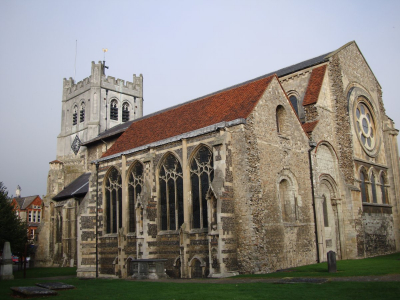Henry VIII (28 June 1491 28 January 1547) was King of England from 22 April 1509 until his death in 1547. Henry is best known for his six marriages, and for his efforts to have his first marriage (to Catherine of Aragon) annulled. His disagreement with Pope Clement VII about such an annulment led Henry to initiate the English Reformation, separating the Church of England from papal authority. He appointed himself Supreme Head of the Church of England and dissolved convents and monasteries, for which he was excommunicated. Henry is also known as "the father of the Royal Navy", as he invested heavily in the navy, increasing its size from a few to more than 50 ships, and established the Navy Board.Domestically, Henry is known for his radical changes to the English Constitution, ushering in the theory of the divine right of kings in opposition to Papal supremacy. He also greatly expanded royal power during his reign. He frequently used charges of treason and heresy to quell dissent, and those accused were often executed without a formal trial by means of bills of attainder. He achieved many of his political aims through the work of his chief ministers, some of whom were banished or executed when they fell out of his favour. Thomas Wolsey, Thomas More, Thomas Cromwell, Richard Rich, and Thomas Cranmer all figured prominently in his administration.
Henry was an extravagant spender, using the proceeds from the dissolution of the monasteries and acts of the Reformation Parliament. He also converted the money that was formerly paid to Rome into royal revenue. Despite the money from these sources, he was continually on the verge of financial ruin due to his personal extravagance, as well as his numerous costly and largely unsuccessful wars, particularly with King Francis I of France, Holy Roman Emperor Charles V, King James V of Scotland and the Scottish regency under the Earl of Arran and Mary of Guise. At home, he oversaw the legal union of England and Wales with the Laws in Wales Acts 1535 and 1542, and he was the first English monarch to rule as King of Ireland following the Crown of Ireland Act 1542.
Henry's contemporaries considered him to be an attractive, educated, and accomplished king. He has been described as "one of the most charismatic rulers to sit on the English throne" and his reign has been described as the "most important" in English history. He was an author and composer. As he aged, he became severely overweight and his health suffered. He is frequently characterised in his later life as a lustful, egotistical, paranoid and tyrannical monarch. He was succeeded by his son Edward VI.
The Abbey Church of Waltham Holy Cross and St Lawrence is the parish church of the town of Waltham Abbey, Essex, England. It has been a place of worship since the 7th century. The present building dates mainly from the early 12th century and is an example of Norman architecture. To the east of the existing church are traces of an enormous eastward enlargement of the building, begun following the re-foundation of the abbey in 1177. In the Late Middle Ages, Waltham was one of the largest church buildings in England and a major site of pilgrimage; in 1540 it was the last religious community to be closed during the Dissolution of the Monasteries. It is still an active parish church for the town.The monastic buildings and those parts of the church east of the crossing were demolished at the Dissolution, and the Norman crossing tower and transepts collapsed in 1553. The present-day church consists of the nave of the Norman abbey church, the 14th-century lady chapel and west wall, and a 16th-century west tower, added after the dissolution.King Harold Godwinson, who died at the Battle of Hastings in 1066, is said to be buried in the present churchyard.

 English
English  español
español  français
français  português
português  русский
русский  العربية
العربية  简体中文
简体中文 
